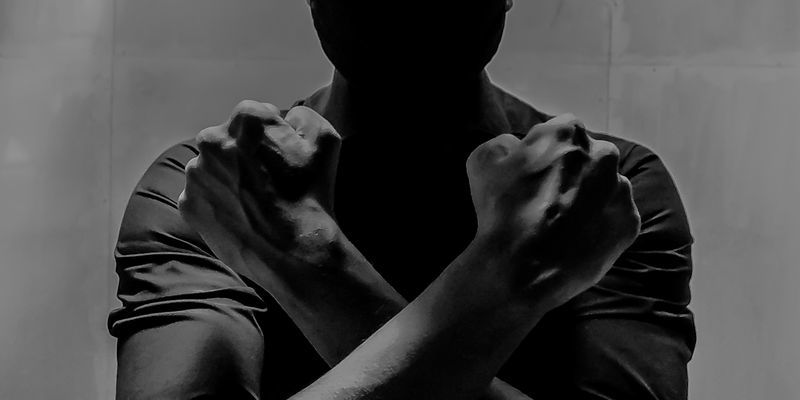The importance of representation: What Disney’s Black Little Mermaid means for the film industry
Two Temple experts, Sherri Hope Culver and Roland Williams, discuss the importance of representation in Disney’s The Little Mermaid live-action movie.

After 34 years, Disney returns under the sea with its live-action adaptation of The Little Mermaid, premeiring in theaters on May 26. The new version stars Halle Bailey, most known for her role in the Grammy-nominated Chloe x Halle R&B duo, as Ariel in the actress’s first starring feature film role. This casting of a Black woman as the iconic mermaid has made waves.
When Disney announced in 2019 that Bailey would be playing Ariel, racist insults and comments flooded the internet, spawning the hashtag #notmyariel, which intensified after the company released the first look of the remake last September. YouTube even hid its dislike counter on the official video after it racked up more than 1.5 million “dislikes.” Critics argue that the fictional character shouldn’t be Black.
But not everyone shares this sentiment. Heartwarming reactions of Black children seeing this new Ariel for the first time in the teaser went viral on TikTok and Instagram, prompting positive responses from viewers and wider media coverage. And in March a young fan clung to Bailey at Walt Disney World, resulting in another viral moment showing the positive impact of representation. Additionally, Mattel released an Ariel doll in April resembling Bailey, including the red braids and mole above her eyebrow, and it has quickly become a #1 bestseller on Amazon.
According to director Rob Marshall, who has also made Disney’s Into the Woods and Mary Poppins Returns, there wasn’t a casting agenda for Ariel. He says they were looking for the best actor for the role of any ethnicity who could not only sing but convey traits such as strength, passion, beauty, joy and intelligence, which they found in Bailey.
Sherri Hope Culver, an expert in children’s media, associate professor in media studies and production and director of the Center for Media and Information Literacy, and Roland Williams, professor and department chair of English with expertise in African American literature and Hollywood cinema, explain the impact of diversity in film and the importance of diversity in Hollywood and inclusive storytelling with Disney’s decision to cast a Black actress as Ariel.
On the significance of casting a Black actress as Ariel
Sherri Hope Culver: To have a Disney character who is not just a princess but a live-action, real flesh and blood person that children can be inspired by is important. This is because people of color are less likely to see themselves reflected in the media. They are one of the underrepresented groups in Hollywood. Parents of children of color in particular have said how difficult it is for them to find media role models for their children given this lack of representation in Hollywood. Young girls have strong parasocial relationships—which are one-sided attachments often with a celebrity or fictional character—and this is particularly apparent with Disney princesses. So to have a popular Disney character as a person of color leaves a strong, positive mark on their minds, especially when they see that character change from white to Black. If Disney can do it, everybody can do it.
Roland Williams: The current generation is getting a new visual landscape so that they can have a different perspective and a greater appreciation of human differences. Representation of an African American woman as a love interest and a beautiful being should become natural. This version of The Little Mermaid is great for young people because it allows them to better appreciate diversity and gain a better sense of the world. Diversity and inclusion in film and TV can attract a larger audience and is seen as more authentic and enjoyable.
On the racist backlash of Disney’s casting choice
SHC: It’s sad that, as a country, we aren’t more empathetic to issues of race and racial identity. The divisiveness in the U.S. politically is often along race lines, and the discussions around anti-racism and teaching critical race theory tell us that for some percentage of Americans there’s fear around diversity and inclusion. To have a company as big as Disney say diverse representation is important and that it’s willing to step a foot in this battle adds to the fear. I like to think there will be some young white girls who look upon this Ariel with just as much wonder, love and inspiration in their eyes as the young Black girls have. Maybe that will move the needle a little bit for more tolerance and acceptance for their generation. That’s the power of media—and Disney specifically.
RW: The whole premise of the movie is mythical. There’s no such thing as a mermaid. What would the mermaid’s skin color be? Because it’s fiction, it can look like whatever the human mind can imagine.
But as a society, we’ve been forced into certain ways of looking at the world. People getting upset about casting an African American woman in this role stems from our history as a country and our sense of race and social identity. Every culture has had some sort of theater and used masks to identify characters and specify personas. In the U.S., skin color came to represent our theatrical masks.
Our pop culture began with the minstrel show, where white men painted their faces black and pretended to be Black men, and color became the signifier of character. Hollywood then began to establish certain roles for certain colors. American audiences have now become accustomed to identifying people based on their complexion. For African American women especially, the roles have been limited. Mostly, they have been cast as maids or mistresses.
The first African American woman to win an Oscar was Hattie McDaniel, who played a maid in Gone With the Wind. Many years later, Halle Berry won for playing a mistress in Monster’s Ball. African Americans don’t usually get Oscars for playing complicated roles and usually win for roles in which people think they’re just being themselves. Hence news of Ariel’s skin color raised a backlash. A Black woman in the starring role was bound to be seen as a miscasting, an out-of-character representation of a Black woman. What they are really asking is, ‘How could she be the star in this way?’
On the personal impact of representation in the media
SHC: Part of child development is establishing your sense of self and identity in the world. One way we do that is measuring ourselves in relation to our surroundings. There’s no more prevalent a mirror to that than the media children are exposed to. From a very young age, children understand that having a presence in the media affirms your importance in the world. When it’s not there, it takes away that opportunity for affirmation. Children will feel they can’t be things they can’t see.
I almost can’t imagine what that feels like. I didn’t have trouble finding role models and media that portray characters who looked like my daughter. She was able to easily find characters to identify with. I can’t imagine how powerful that moment would be to a child of color to finally see a character who resembles you. The reaction of the girls in the viral videos says it all. I hope those videos helped some people understand—maybe for the first time—how important it is for children to see a person who looks like them. There are millions of people in this country who are never around someone who looks different than them, so having children’s media show diversity can be an eye-opener for all kinds of audiences in different ways.
On the idea of color-conscious versus colorblind casting
SHC: It would be difficult to come up with specific rules about casting. On the one hand, I’d like Hollywood to just consider talent. On the other hand, being able to tell authentic stories with characters of a particular race or ethnicity is also important. The topic of colorblind casting touches on issues of opportunity and more specifically about racism. If people are locked out of auditioning because the call went out for a certain race or ethnicity, it takes the opportunity away. We want to get to a place where anyone with talent can audition. The story of Ariel is not tied up in her ethnicity or race, but there are stories where it is. In those cases, we want the stories to be told with actors who have an authentic connection to that character in some way.
RW: We’re in a new age where casting should be based more on talent than complexion. But it’s hard to say when colorblind casting will happen because we’re very much color-conscious. Colorblind casting has been difficult to do. The irony is that in early American pop culture, white people played people of color to the delight of audiences. In fact, blackface performances were the first form of popular entertainment in the country. People of color couldn’t portray themselves. No one said anything about that. Only now there is outrage as the roles are reversed. Why can’t people of color play themselves? Why can’t people of color play white characters or go beyond certain set roles? Why can’t Black actors have the roles once reserved for white people? In fact, why can’t we have a Native American or Chinese Superman, or Wonder Woman, for instance, since the characters are make-believe? Is it not time for Hollywood to stop reserving leading roles for whites only?


